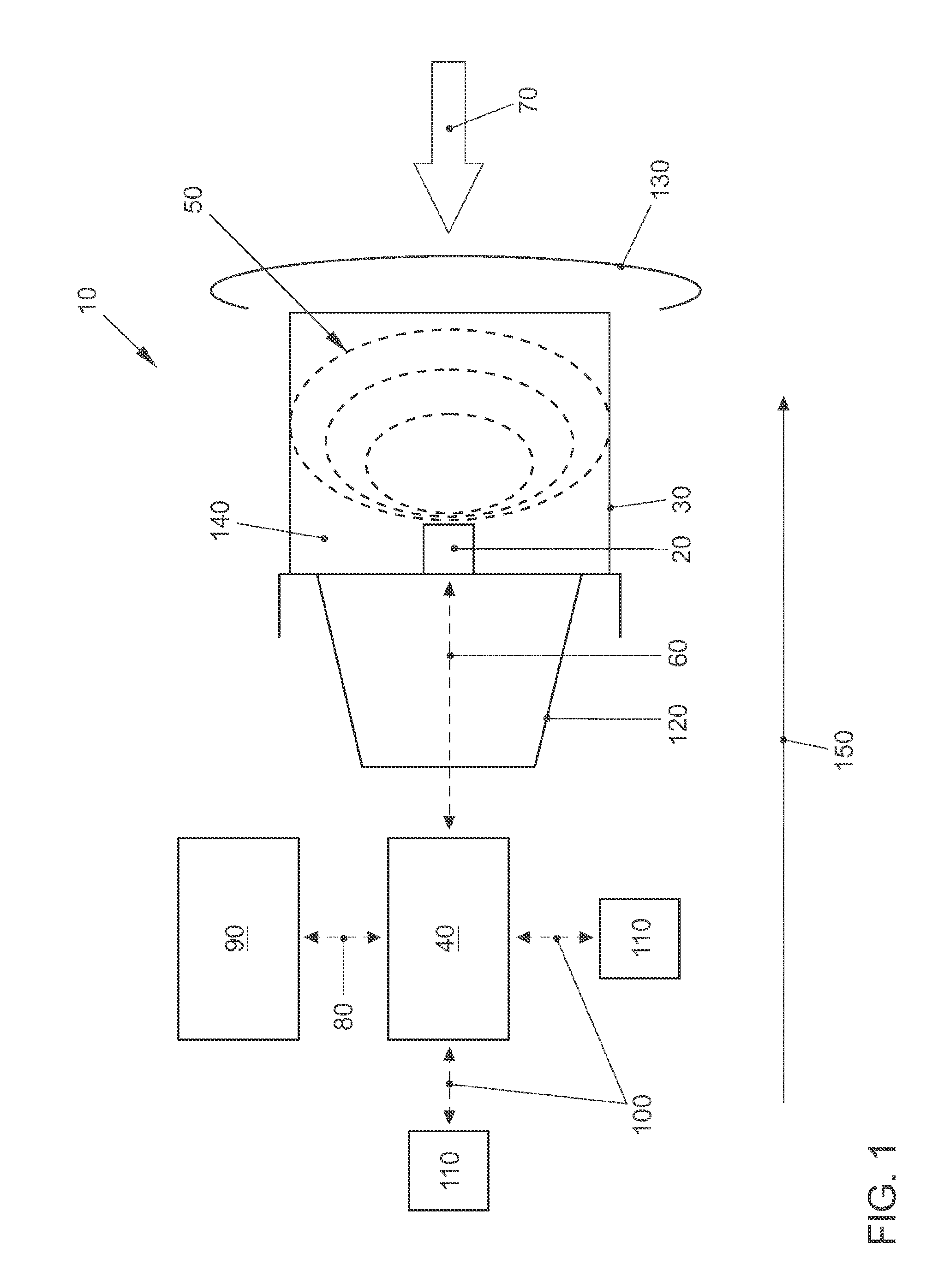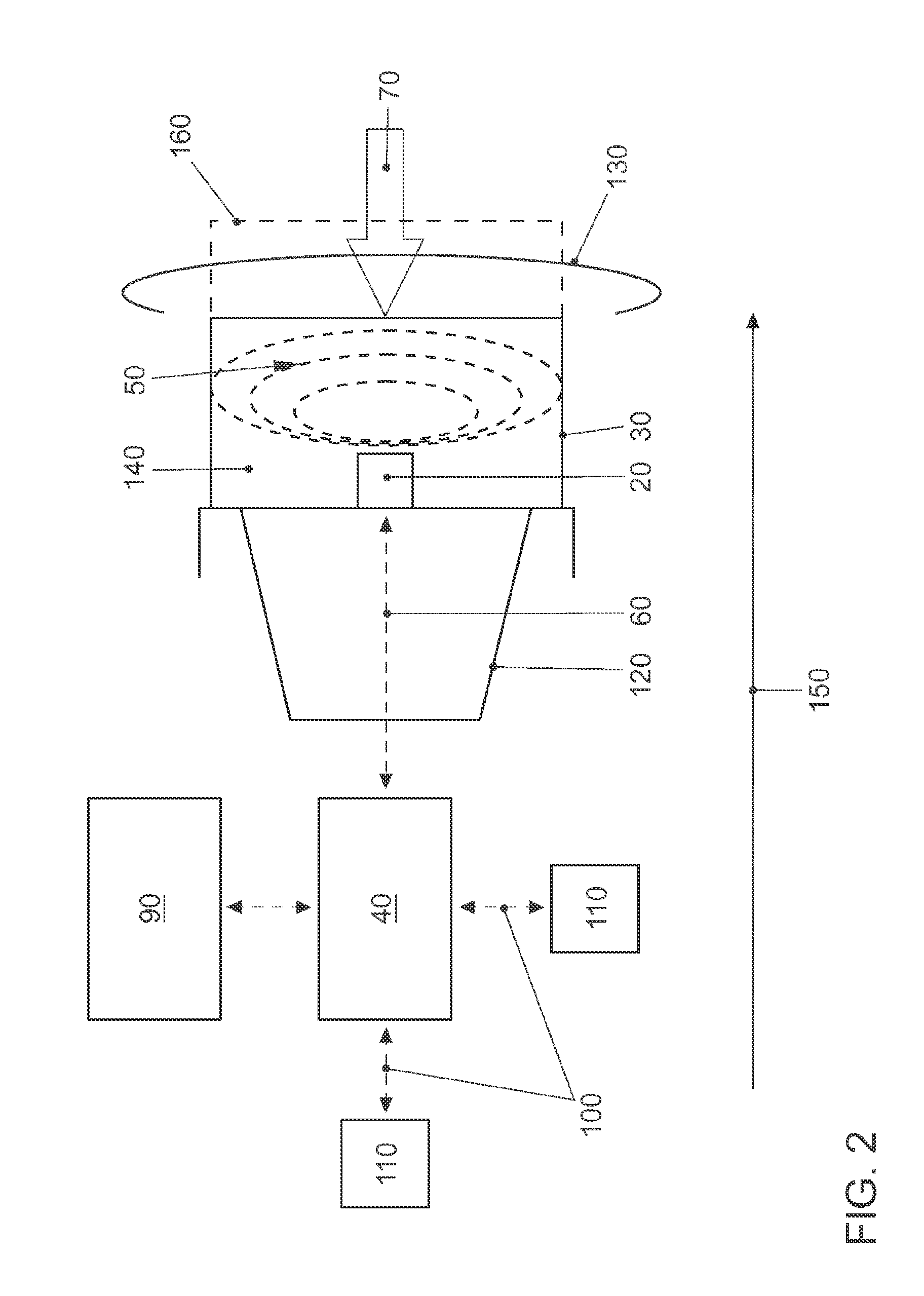Pedestrian protection system for a vehicle
a technology for pedestrian protection and vehicle, applied in the direction of pedestrian/occupant safety arrangement, process and machine control, instruments, etc., can solve problems such as the change of electromagnetic field in the cavity, and achieve the effect of reducing the space requiremen
- Summary
- Abstract
- Description
- Claims
- Application Information
AI Technical Summary
Benefits of technology
Problems solved by technology
Method used
Image
Examples
Embodiment Construction
[0024]FIG. 1 shows a pedestrian protection system 10 of the invention. Pedestrian protection system 10 has a capacitive sensor 20, a deformation element 30, and a control unit 40.
[0025]Sensor 20 monitors an electric field 50 generated by sensor 20. Electric field 50 does not change during accident-free operation of the vehicle (not shown in greater detail) in which pedestrian protection system 10 is installed. Capacitive sensor 20 is connected to control unit 40 via a bidirectional data line 60, for example, a CAN bus (CAN: Controller Area Network). Capacitive sensor 20 transmits its signals via data line 60 to the capacitive sensor. Control unit 40 is capable of transmitting control signals to sensor 20 via data line 60. Such control signals can serve the following purposes: activating sensor 20; deactivating sensor 20; diagnosing sensor 20; and changing electrical field 50 in order to adjust the field strength to changed ambient conditions.
[0026]Control unit 40 analyzes the receiv...
PUM
 Login to View More
Login to View More Abstract
Description
Claims
Application Information
 Login to View More
Login to View More - R&D
- Intellectual Property
- Life Sciences
- Materials
- Tech Scout
- Unparalleled Data Quality
- Higher Quality Content
- 60% Fewer Hallucinations
Browse by: Latest US Patents, China's latest patents, Technical Efficacy Thesaurus, Application Domain, Technology Topic, Popular Technical Reports.
© 2025 PatSnap. All rights reserved.Legal|Privacy policy|Modern Slavery Act Transparency Statement|Sitemap|About US| Contact US: help@patsnap.com



